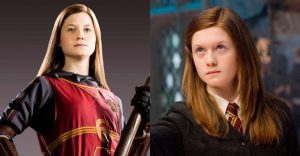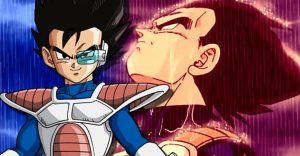The Good, The Bad, And The Ugly: 10 Things That Still Hold Up Today

Sergio Leone pioneered the spaghetti western – Italian cinema’s rough, brutal, blood-soaked vision of the American frontier – with his 1964 hit A Fistful of Dollars. But he arguably didn’t perfect his gritty new subgenre until he completed the Dollars trilogy with the 1966 masterpiece The Good, the Bad, and the Ugly.
More than half a century later, The Good, the Bad, and the Ugly remains a timeless gem that new audiences are still discovering. From Clint Eastwood’s lead performance to Ennio Morricone’s iconic musical score, all of the elements that made the movie a hit in the 1960s still hold up today.
10 The Trio’s Introductions

The opening scenes of The Good, the Bad, and the Ugly introduce audiences to the titular trio with three acts of violence: Tuco is seen killing three bounty hunters sent to get him, Angel Eyes murders an ex-Confederate soldier and his young son, and Blondie’s attempt to free Tuco results in a large-scale shootout.
Blondie’s attempt to save Tuco instantly establishes him as “the good,” Angel Eyes’ cold-blooded killing instantly establishes him as “the bad,” and Tuco’s triple homicide to evade capture instantly establishes him as “the ugly.” These clear and concise introductions establish not only the characters but also the central conflict and themes of the movie.
9 Ennio Morricone’s Operatic Score

According to Vulture, Ennio Morricone composed one of the greatest film scores of all time for The Good, the Bad, and the Ugly. Just like in Leone’s other westerns, Morricone’s operatic orchestrations perfectly match Leone’s grand vision of the West.
Even people who haven’t seen the movie are familiar with Morricone’s iconic theme from The Good, the Bad, and the Ugly. It’s not only the quintessential Morricone western score but also the definitive western score for cinephiles and general audiences alike.
8 Lee Van Cleef’s Menacing Performance As Angel Eyes (“The Bad”)

The most sadistic character in the Sergio Leone rogues gallery is arguably Frank, the gunslinger played against type by Henry Fonda in Once Upon a Time in the West, but Angel Eyes (or “the bad”) from The Good, the Bad, and the Ugly is a close second.
Angel Eyes is shown committing completely random murders throughout the movie, but what really makes him unsettling is Lee Van Cleef’s intense eyes and ominous smirk. Due to Van Cleef’s charismatic performance, Angel Eyes is a revolting villain that viewers can’t help but watch.
7 Telling A Simple Story On An Epic Scale

Although The Good, the Bad, and the Ugly is a three-hour epic, its narrative isn’t overly complicated. All three characters are searching for the same hidden stash of Confederate gold.
There’s hardly any exposition to communicate to the viewer. The story is about the journey, allowing Leone to focus on character and action. As a result, the movie is engaging and fast-paced, and never feels like it’s dragging on despite the extensive runtime.
6 The Satirically Exaggerated Violence

With his spaghetti western masterpieces, Leone reinvigorated the dying western genre with tongue-in-cheek humor and over-the-top violence. While most classic westerns whitewashed history and offered manipulative mythmaking, Leone broke it all down with uncomplicated gunslingers roaming the blood-drenched frontier.
This satirical deconstruction of well-worn western tropes peaked in The Good, the Bad, and the Ugly. Once Upon a Time in the West is similarly a masterpiece, but it’s more of a love letter to the classics of the genre than an ironic takedown.
5 Eli Wallach’s Endearing Performance As Tuco (“The Ugly”)

Blondie and Angel Eyes remain mysterious strangers to the audience, so Tuco is the closest character to the audience’s hearts. Unlike the other two, we get to know Tuco’s backstory, his motivations, and his family life.
He’s neither good nor bad; he’s just a bandit trying to get by on the harsh frontier. Eli Wallach’s performance endears the audience to Tuco (or “The Rat,” as Blondie calls him) and remains one of the actor’s most memorable roles.
4 The Scope Of The Civil War Battle

The Civil War battle in the middle of The Good, the Bad, and the Ugly stands as one of the most memorable war scenes in the western genre. In this sequence, two warring armies stand between Blondie and Tuco and the cemetery where the Confederate gold is stashed.
To break up the battle and grant them access to the gold, Blondie and Tuco blow up a nearby bridge in one of the largest explosions ever created for a movie. The idea of breaking up a war for money is a brilliant satirical jab at the concept of war itself. Leone isn’t concerned with depicting the majesty of war like other filmmakers of the period; rather, he includes the Civil War battle to highlight the characters’ greed and disregard for a greater social and political movement.
3 Tonino Delli Colli’s Breathtaking Widescreen Cinematography

Cinematographer Tonino Delli Colli captures a ton of gorgeous desert landscapes with super-wide lenses throughout The Good, the Bad, and the Ugly. The threequel’s landscape photography rivals Loyal Griggs’ Oscar-winning work on George Stevens’ western classic Shane.
As usual, Leone cuts between wide shots and extreme closeups. But in The Good, the Bad, and the Ugly in particular, he lingers on the wide shots to bask in their beauty. Colli’s memorable work would later influence Clint Eastwood, who directed his own brutal western Unforgiven in 1992.
2 The Perfectly Edited Finale

In the breathtaking final sequence of The Good, the Bad, and the Ugly, the eponymous trio convenes in the graveyard and they prepare for a three-way climactic duel. This sequence is suitably tense, thanks to its pitch-perfect editing, showcasing one of Leone’s hallmarks: juxtaposing wide shots with tight closeups.
The cuts get faster and the shots get closer building up to the draw. Right before the pistols come out and the bullets start flying, Leone closes in on eyes and holsters. According to the BBC, it’s one of the most masterfully directed sequences in the history of cinema.
1 Clint Eastwood’s Ice-Cool Turn As The Man With No Name (“The Good”)

Clint Eastwood had already played “The Man with No Name” in A Fistful of Dollars and For a Few Dollars More before reprising the role in The Good, the Bad, and the Ugly. After three movies, Eastwood had perfected the character’s icy stares and suave attitude.
The Man with No Name is the quintessential western antihero, and the quintessential Clint Eastwood role (although “Dirty Harry” Callahan gives him a run for his money). The character, and Eastwood’s performance, have been imitated and parodied countless times since the film’s release and stand alongside Dustin Hoffman’s Benjamin Braddock and Gregory Peck’s Atticus Finch as the most memorable film protagonists of the 1960s.
About The Author


















